~~ Book Set 1895150333a ~~
Joseph Heco
The Narrative of a Japanese
Volumes I and II
1895 Original/First Printing
Volume I, 1895 Original/First Printing
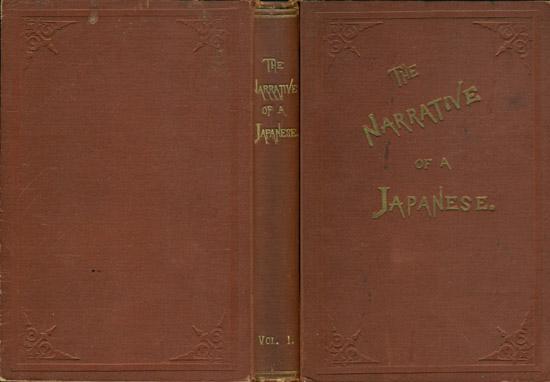
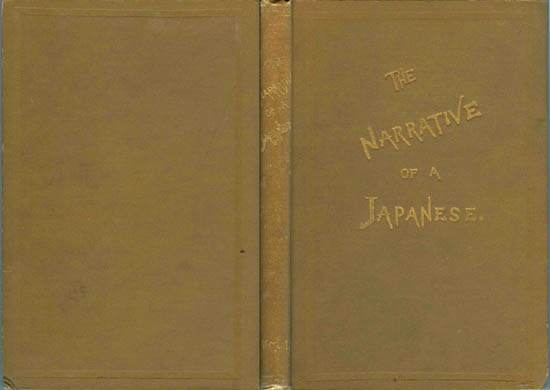
Volume II, 1895 Original/First Printing
Condition, Volume I. The book is in Very Good condition. The binding is solid. The covers have moderate staining, the corners are bumped and the edges have scrapes. The head and foot of the spine are soft and slighlty frayed. Internally the book is clean with almost no foxing or staining. There are no tears or markings except for a pencil eraser evident on the front free page.
Condition, Volume II. The book is in Very Good condition. Covers are lightly faded, edges scraped, head and foot of the spine soft and corners bumped. While the hinges are not cracked, the binding is lightly shaken. No pages are loose but a few show separation form the binding ranging for 1/4 inch to 1 inch. Inside the front and back cover, the free front and end pages, title page, errata page and colophon are browned. The other internal pages/plates are lightly age toned but remain supple and are not brittle. There is an "Isseido" paste-on label on the inside front cover. The pages are free from tears, staining and markings except a penciled date has been erased on the title page.
Original Edition
Heco, Joseph (Narrative Writer)
Murdoch, James (Editor):
The Narrative of a Japanese: What he has seen and the people he has met in the course of the last forty years., Yokohama, printed by the Japan Gazette Newspaper Company, Yokohama and sold by Maruzen Ltd., Tokyo, 1895, 8vo, 2 volumes, 14 plates, 1 map, 17 text illustrations, 346 pp and 254 pp. This is narrative of Joseph Heco (1837-1897), a fisherman from the province of Sanyodo (Japan), who went to sea in 1850. He was shipwrecked and rescued by an American ship which took him to California. He did not return to Japan until 1859. Heco became the first Japanese national to be naturalized as an American citizen. This narrative offers a very unique perspective on the opening of Japan and the Western push to open the country. Though the eyes of a native Japanese familiar with both cultures, one views the opening of Japan from Perry's ground breaking expedition to the establishment of diplomatic and trade relations through the domestic and international turmoil that ensued as Japan passed into the Meiji era. The narrative alternates between a summary of events and a day by day journal. Key events are recorded in Heco's own words and through published accounts.
Volume I, 8vo, brown cloth, blindstamped rules and decoration, gilt lettering on front cover and spine, preface (i-iii), chapters numbered from I-XXIV, 2 plates, 1 map, 10 text illustrations, errata (2 pp), no colophon, 346 pp. Volume I of the narrative traces Heco's life from his birth in 1837 in the village of Komiya, Japan, to his shipwreck in 1850, rescue and journey to the United States. This is followed by accounts of his education and travels within the United States, his return to Japan in 1859 and work as interpreter for the U.S. consulate and his second trip to the United States (1861-1862).
Volume II, 8vo, pale brown cloth, blindstamped rules, gilt lettering on front cover and spine, chapters numbered from I-XVIII, 7 numbered plates, 5 unnumbered plates, 7 text illustrations, appendix (i-v), tipped in errata sheet, colophon, 254 pp. Plates I-II and IV-VII (6 plates) are collotype printed in the original edition. The colophon in this volume serves as the colophon for the set. Volume II of the narrative contains Heco's reminiscences of his adventures, picking up the story shortly after his return to Japan (in 1862) following his second journey to the United States. His later experiences in Japan include an eyewitness account of key events in the Revolution of 1868. This volume covers from August 4, 1862 through October 28, 1891.
|
|
Volume I
1895 Original/First Edition
Title Page.
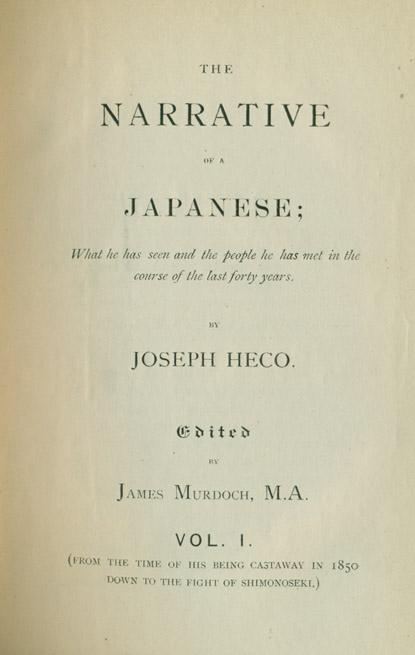
Plates (2).
- Frontispiece - My Birth Place
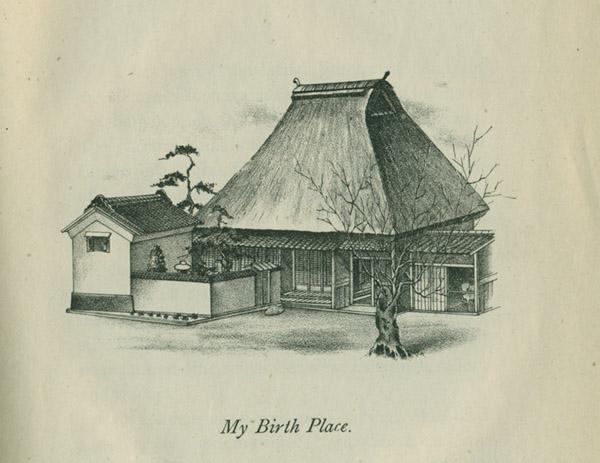
- Matsuri Procession (after page 250)
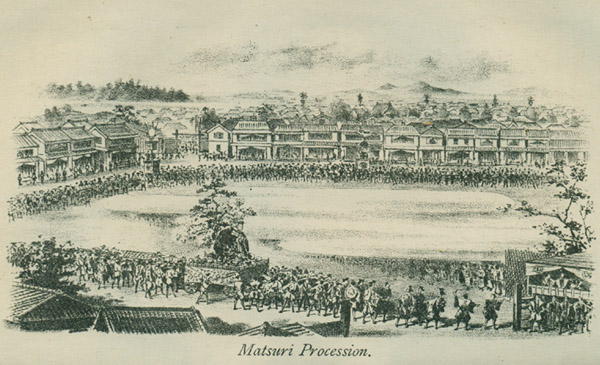
Text Illustrations (10).
- Japanese boat (on page 7)
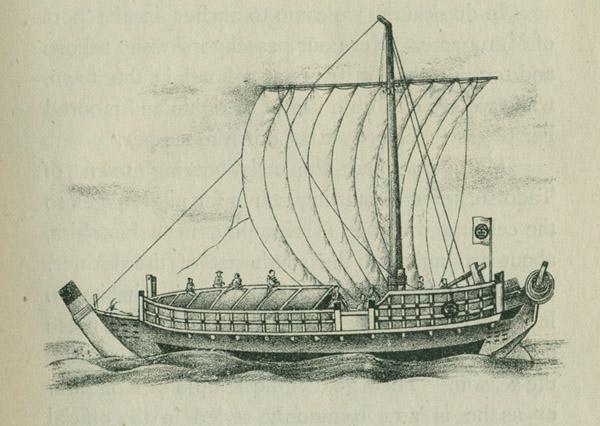
- Rider on horseback (on page 11)
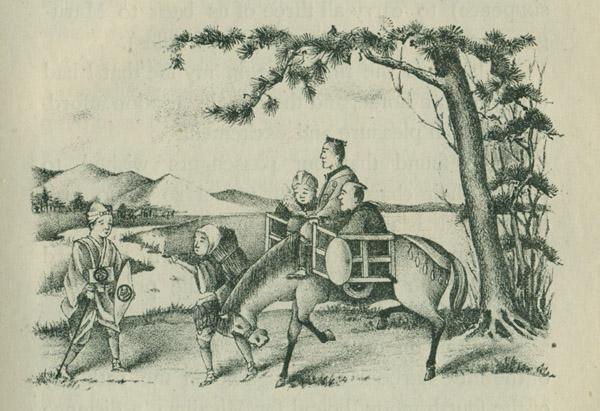
- Snow covered village scene (on page 14)
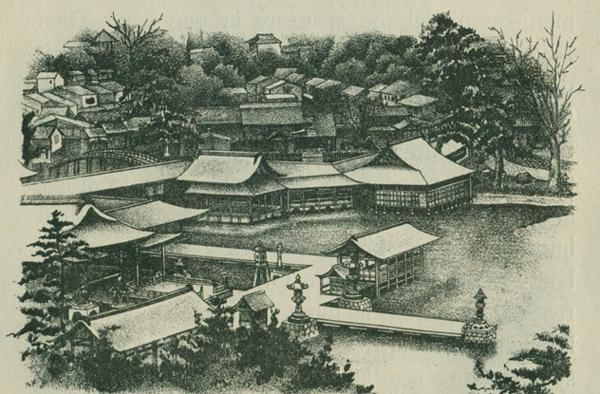
- Multi-arch bridge (on page 17)
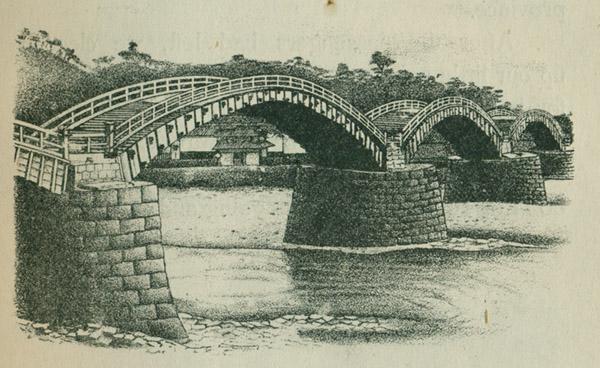
- Funeral Procession (on page 24)

- Temple of Asakusa (on page 29)
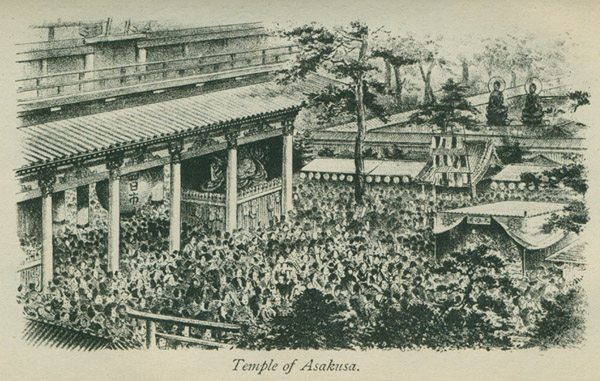
- Japanese boat in rough seas (on page 39)
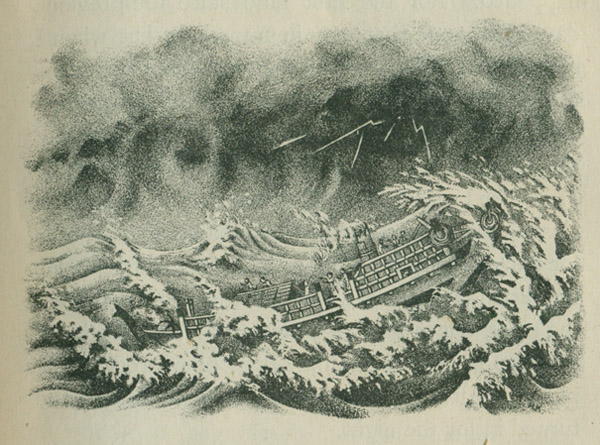
- Japanese boat and sails ship (on page 58)

- Original Plan of Yokohama (on page 204)
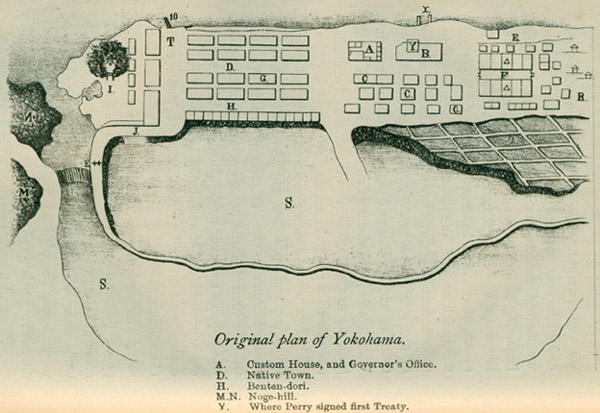
- Audience chamber (on page 224)
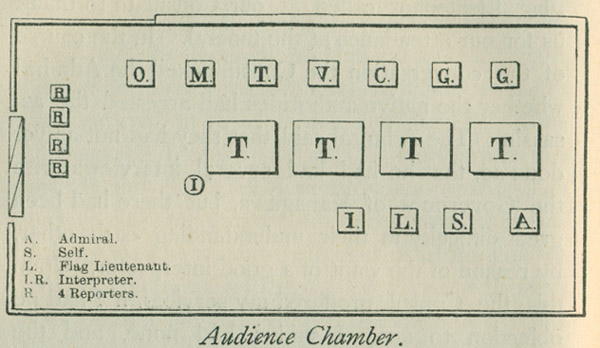
Map (1).
- Straits of Shimonoseki (after page 346)

Volume II
1895 Original/First Edition
Title Page.
 Numbered Plates.
Numbered Plates.
- Plate I.* Bird's-Eye View of the City of Yedo, As it appeared in 1863
(before the first numbered page of text)
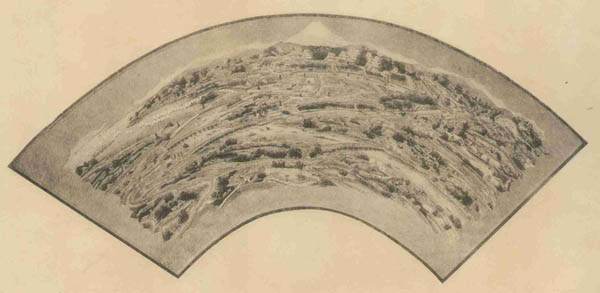
- Plate II.* Prince Nagato's Residence in Yedo, 1864 (before page 63)
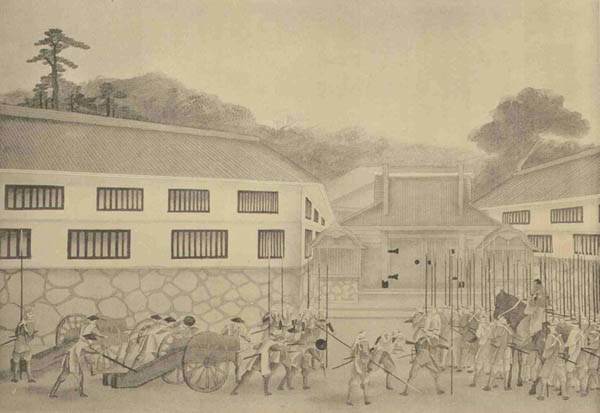
- Plate III. Plan of Battle at Choshiu (actually a text illustration on page 66)
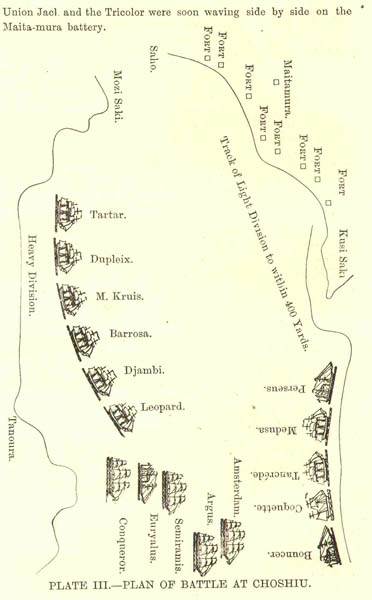
- Plate IV.* Battle Scene at Tsukuba-Zan, Nov 7, 1864 (before page 69)
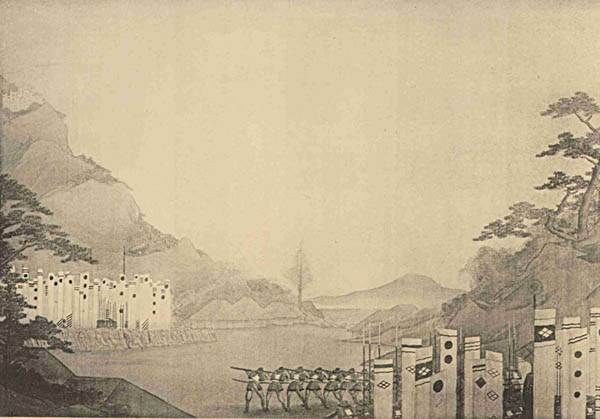
- Plate V.* A Large Gold Coin, "Oban" (before page 149)
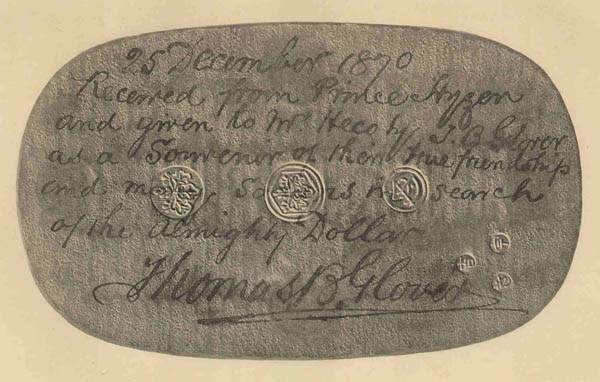
- Plate VI.* The Emperor's Visit to Nagasaki, June, 1872 (before page 169)
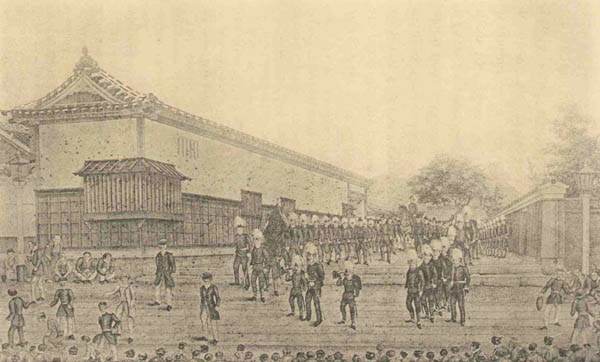
- Plate VII.* Destruction of Prince Nagato's Yashiki,
by Order of Shogun's Government in 1864 (before page 173)
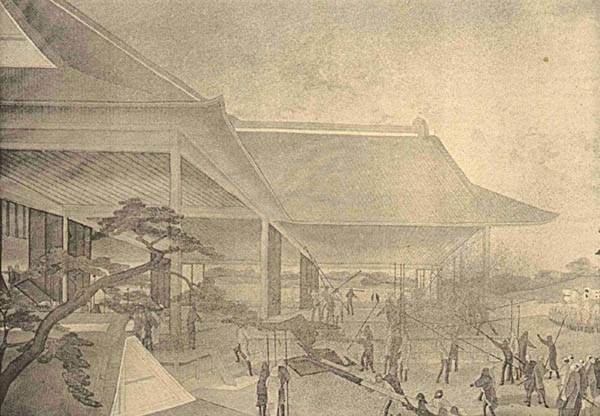
Unnumbered Plates (5) (printed on one side of the paper only).
- Unnumbered Plate.** Handwritten letter of Sept 25, 1865 from US Secretary
of State Seward to Heco (2 pages long, after page 78)
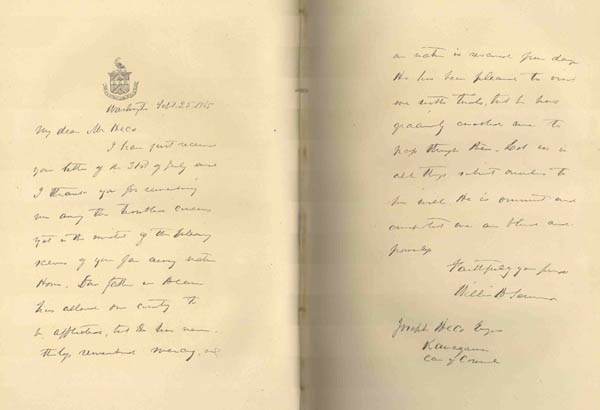
- Unnumbered Plate.** Letter from Mr. Ito (after page 98)
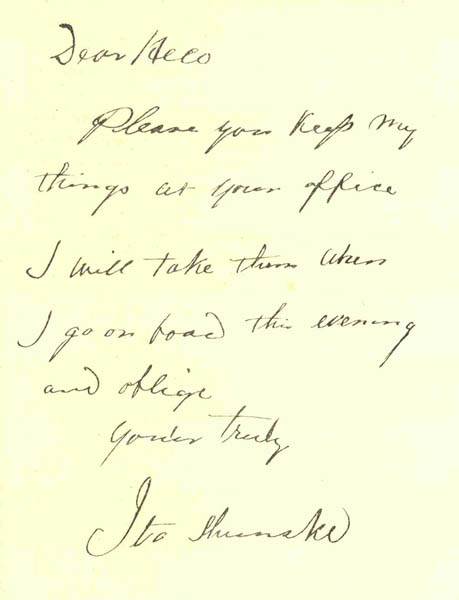
- Appendix A.** (unnumbered plate). Full page plate with handwritten Japanese text
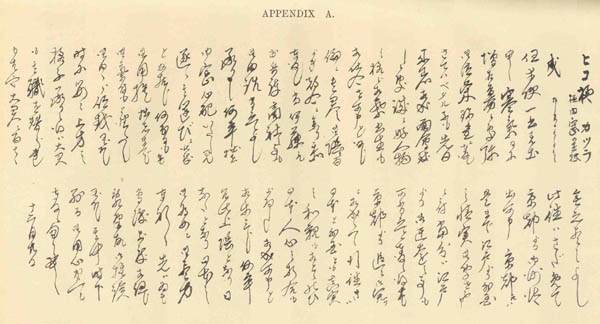
- Appendix B.** (unnumbered plate). Full page plate with handwritten Japanese text
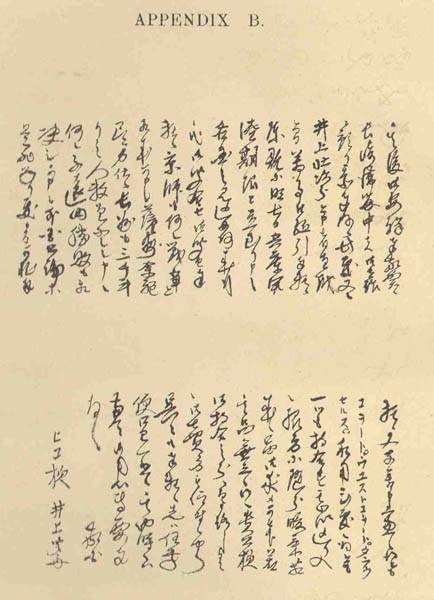
- Appendix C.** (unnumbered plate). Full page plate with handwritten Japanese text

Text Illustrations (7).
- Text Illustration. Picture of Mr. Kido (on page 95)
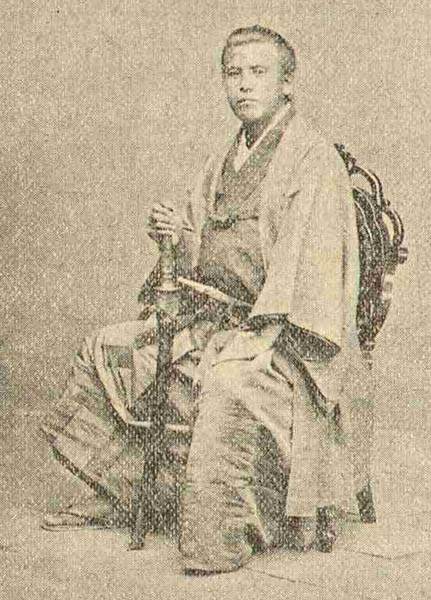
- Text Illustration. Picture of Mr. Ito (on page 99, full page)
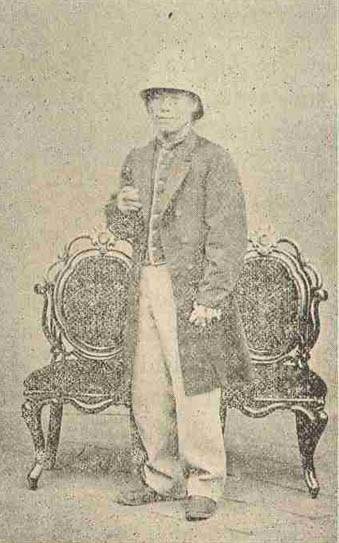
- Text Illustration. Sketch of "house-boat" (on page 119)
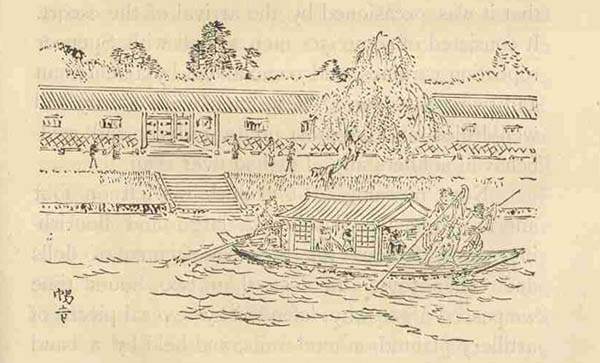
- Text Illustration. Plan of Hizen yashiki, Kioto (on page 124)
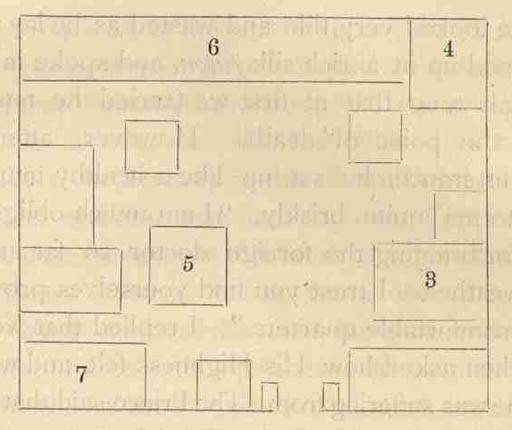
- Text Illustration. Picture of Governor Ito (on page 129)
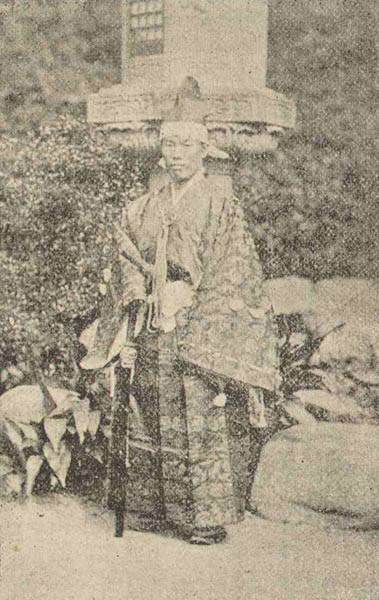
- Text Illustration. Sketch of Kome-Ya, Yashushiro Higo (on page 136)
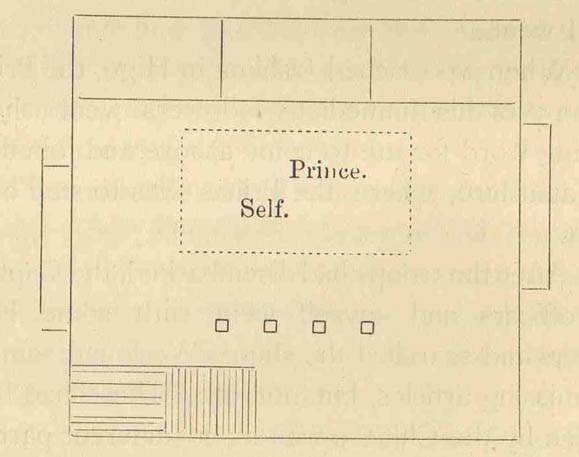
- Text Illustration. Sketch of tomb-stone (grave) (on page 157)
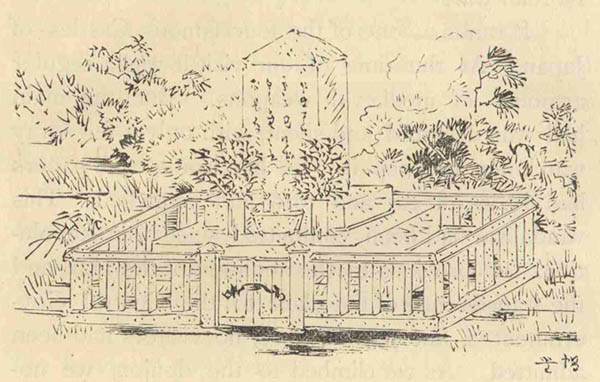
Volume II, Original Edition, Errata Sheet - tipped to blank free page at the rear behind the colophon
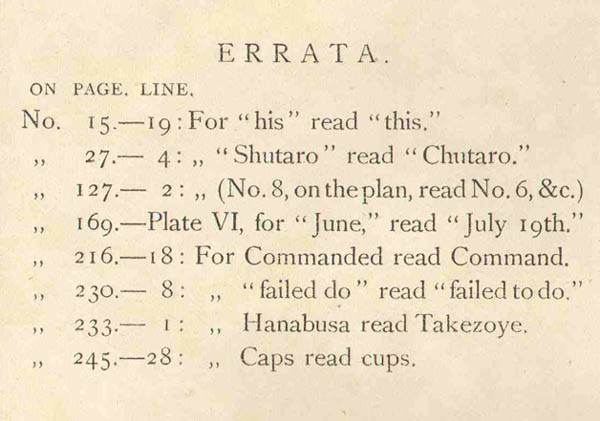
Colophon (at rear of Volume II)
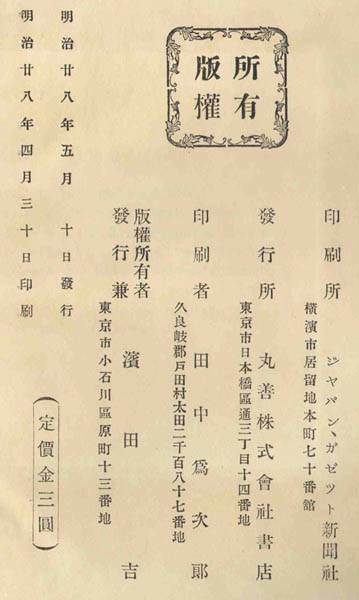
Printed: Meiji 28 (1895).4.30
Published: Meiji 28 (1895).5.10
Printed by the Japan Gazette Newspaper Company, Yokohama
Sold by Maruzen Ltd., Tokyo
Tanejiro Tanka Printer
Copyright Holder and Publisher, Yoshi Hamada, Tokyo
Price, 3 yen
Summary of Both Volumes
Volume I - Listing of Plates, Map & Text Illustration in Chronological Order.
Plates (2)* - Map (1)** and Text Illustrations (10)***
Frontisplate.* My Birth Place
Text Illustration. Japanese boat (on page 7)
Text Illustration. Rider on horseback (on page 11)
Text Illustration. Snow covered village scene (on page 14)
Text Illustration. Multi-arch bridge (on page 17)
Text Illustration. Funeral Procession (on page 24)
Text Illustration. Temple of Asakusa (on page 29)
Text Illustration. Japanese boat in rough seas (on page 39)
Text Illustration. Japanese boat and sails ship (on page 58)
Text Illustration. Original Plan of Yokohama (on page 204)
Text Illustration. Audience chamber (on page 224)
Plate.* Matsuri Procession (after page 250)
Map.** Straits of Shimonoseki (after page 346)
Volume II - Listing of Plates & Text Illustrations in Chronological Order.
Plates* (7 Numbered, 5 Unnumbered) and Text Illustrations (7)****
Plate I.* Bird's-Eye View of the City of Yedo, As it appeared in 1863
before the first numbered page of text)
Plate II.* Prince Nagato's Residence in Yedo, 1864 (before page 63)
Plate III. Plan of Battle at Choshiu (actually a text illustration on page 66)
Plate IV.* Battle Scene at Tsukuba-Zan, Nov 7, 1864 (before page 69)
Unnumbered Plate.** Handwritten letter of Sept 25, 1865 from US Secretary
of State Seward to Heco (2 pages long, after page 78)
Text Illustration. Picture of Mr. Kido (on page 95)
Unnumbered Plate.** Letter from Mr. Ito (after page 98)
Text Illustration. Picture of Mr. Ito (on page 99, full page)
Text Illustration. Sketch of "house-boat" (on page 119)
Text Illustration. Plan of Hizen yashiki, Kioto (on page 124)
Text Illustration. Picture of Governor Ito (on page 129)
Text Illustration. Sketch of Kome-Ya, Yashushiro Higo (on page 136)
Plate V.* A Large Gold Coin, "Oban" (before page 149)
Text Illustration. Sketch of tomb-stone (grave) (on page 157)
Plate VI.* The Emperor's Visit to Nagasaki, June, 1872 (before page 169)
Plate VII.* Destruction of Prince Nagato's Yashiki,
by Order of Shogun's Government in 1864 (before page 173)
Appendix A.** (unnumbered plate). Full page plate with handwritten Japanese text
Appendix B.** (unnumbered plate). Full page plate with handwritten Japanese text
Appendix C.** (unnumbered plate). Full page plate with handwritten Japanese text
* Printed on one side of the page only. In the first (original) edition these
plates are black and white lithographs. Plates are unpaginated.
In Volume 2 some are given plate numbers.
** Printed on one side of page only. Sometimes described and counted as plates.
These are woodcut printed.
*** Text Illustrations in Volume I (original printing) are predominately lithograph
printed with some woodcuts.
**** Text Illustrations in Volume II (original printing) are predominately halftone
printed with some woodcuts.
Often you see Volume II of the first edition described as having "12 leaves" or "12 plates." This probably is the result of counting the seven numbered plates and the five leaves of illustrations not numbered as plates but printed on one side of the page only (** above). In other words, every illustration page printed on one side only is counted as a plate. To reach this total one must count Plate III (which is actually a text illustration) as a plate.
Types of printing used for illustrations.
The plates and illustrations in the 1st edition are printed in lithograph, half-tone and woodcut.
The plates and illustrations in the facsimile edition are printed in half-tone and photolithograph.
Lithograph Plate, Volume I (1895 - 1st edition) and Photolithograph Plate (1950 facsimile edition)
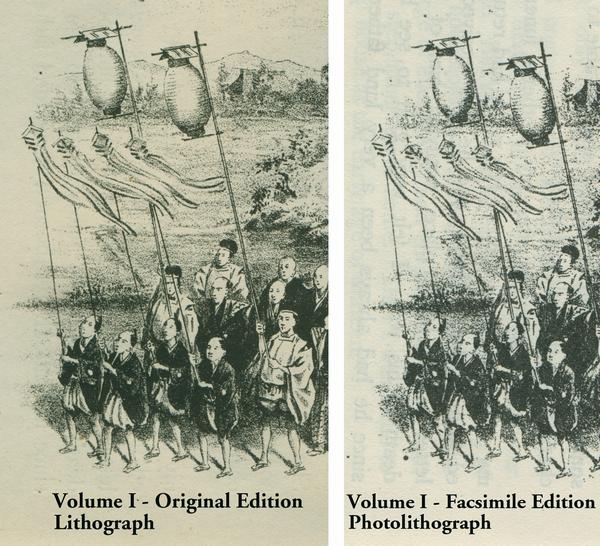
Lithograph Plate, Volume II (1895 - 1st edition) and Halftone Plate (1950 facsimile edition)
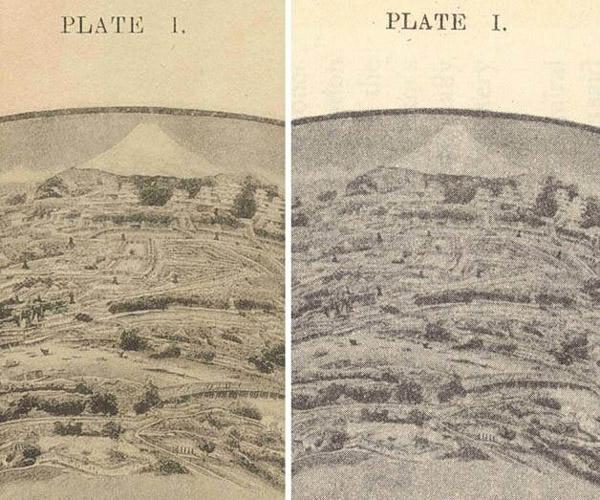
The following are the major distinctions between the 1895 original printing and the ca 1950 facsimile edition.
Size.
Original: Volume I & II. 8vo (6 1/4 x 8 3/4 in - 16 x 22.2 cm)
Facsimile Edition: Volume I & II. 8vo (6 1/4 x 8 3/8 in - 15.8 x 21.5 cm)
The original printing is noticeably longer (.7 cm) along the vertical axis.
Cover Colors - both cloth with gilt lettering.
Original: Volume I. Brown (Blue also confirmed). Volume II. Pale Brown.
Facsimile Edition: Volume I. Brown. Volume II. Olive Green
Blindstamped Ruled Borders on Covers.
Original: Plain blindstamped ruled borders have one recessed area which is ca 1 cm wide (Vol I) and 1/2 cm wide (Vol II).
Original: Volume I (only) has blindstamped decoration on front and back boards. Click here for close-up pic.
Facsimile Edition: Elaborate blindstamped ruled borders have an outer recessed area, a raised area and a much smaller inner recessed area.
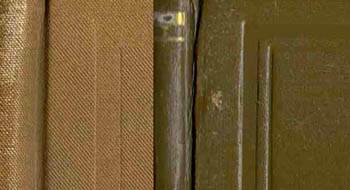
Gilt Bands on Head and Foot of Spine.
Original: Two equal thickness (1.5 mm) gilt bands at head and foot of spine.
Facsimile Edition: Outside gilt band at head and foot of spine is thicker (1.5 mm) than the inside band (.5 mm or smaller).

Colophon.
Original: The colophon (Japanese language) for the set is found at the rear of Volume II. Volume I has no colophon. The set is dated by the colophon found in Volume II.
Facsimile Edition: The original colophon is not reproduced. The reprint colophons are found at the rear of both Volumes I and II. In Volume I, the reprint colophon is printed on the last printed page just below the "Errata." In Volume II the reprint colophon is printed on the back of the last printed page which is also an "Errata" page.
Facsimile Edition, Two Volumes Bound into One.
A one volume consolidated version of the two volume facsimile set was issued. It has blue covers and is otherwise the same, in the aspects mentioned above, as the two volume facsimile edition. I am not aware of any such consolidated publication of the original set.
For information on the 1950 facsimile edition, click here
|
|